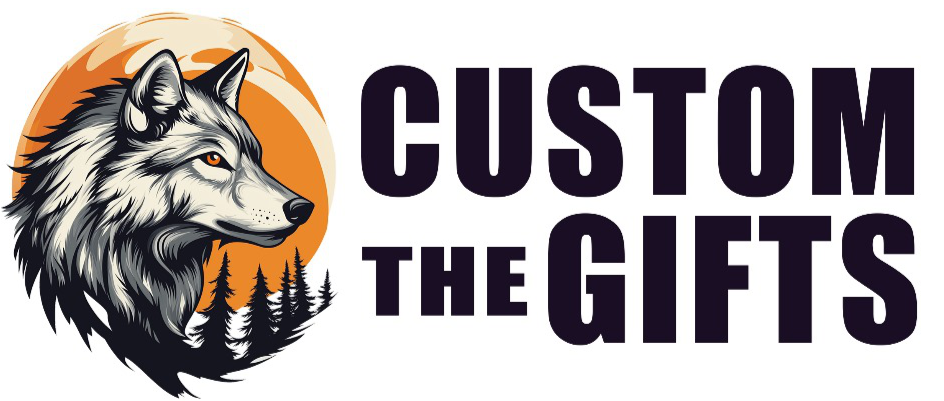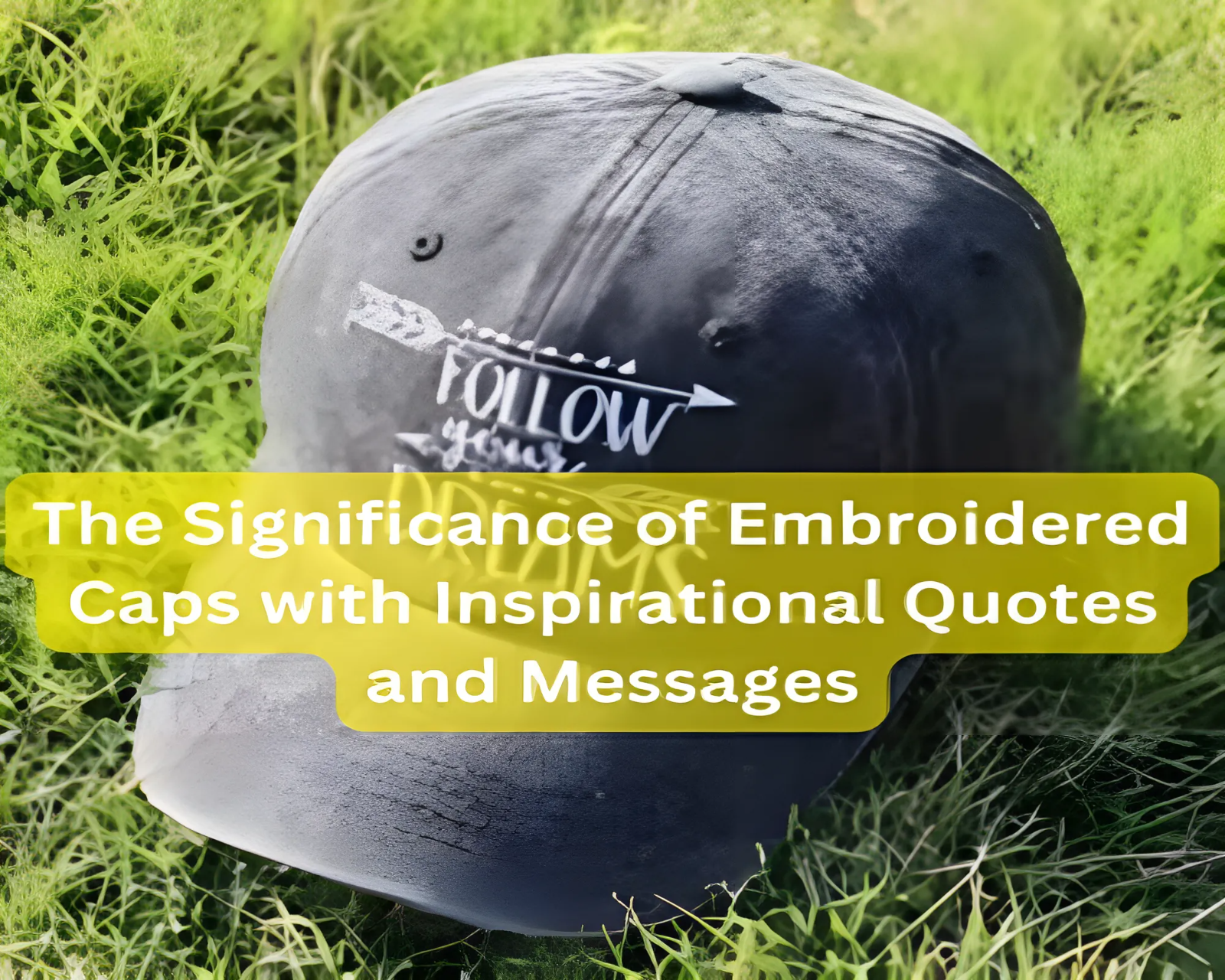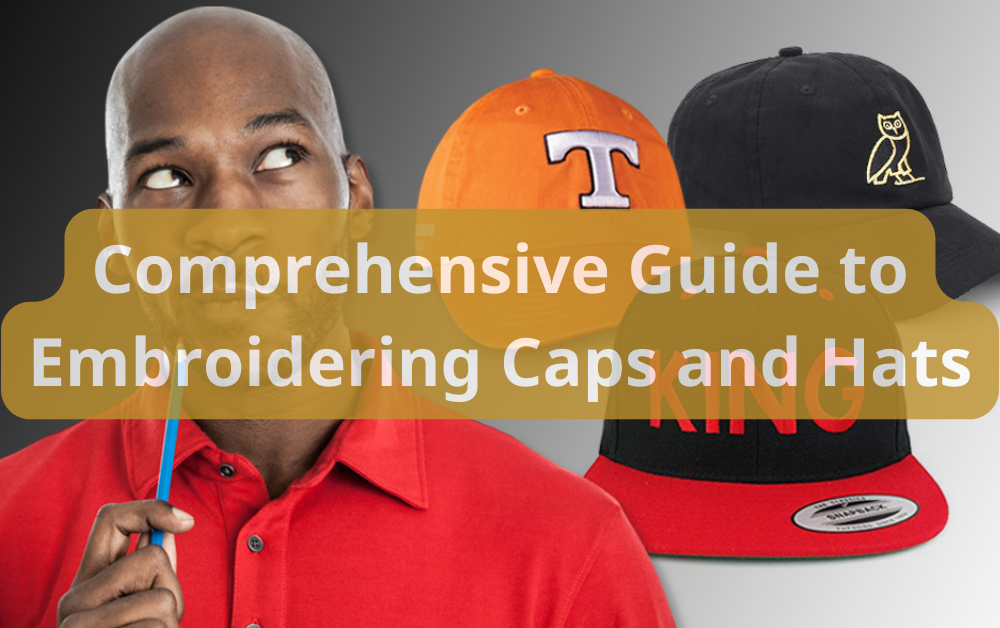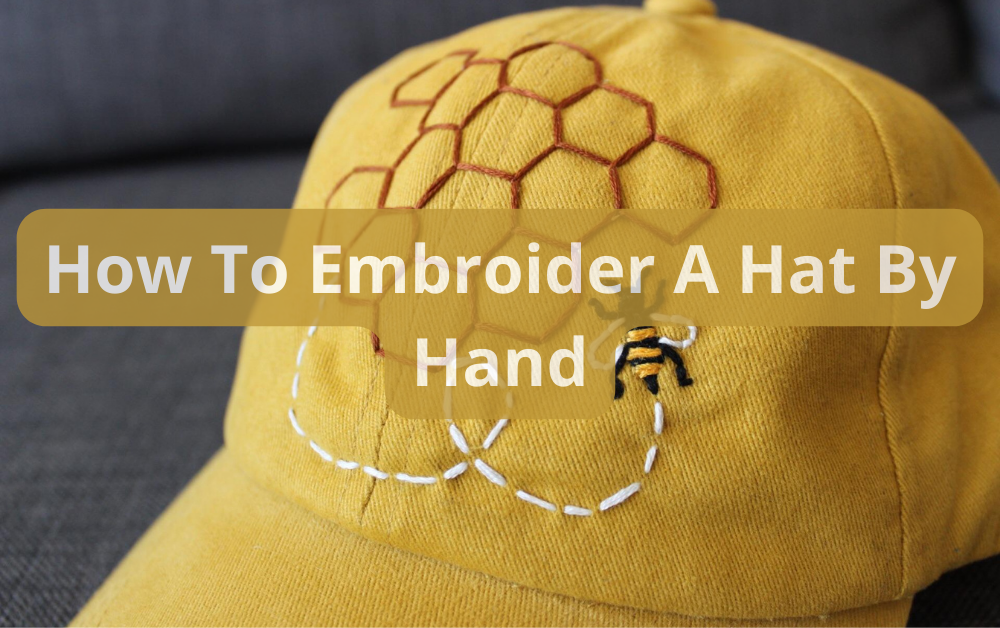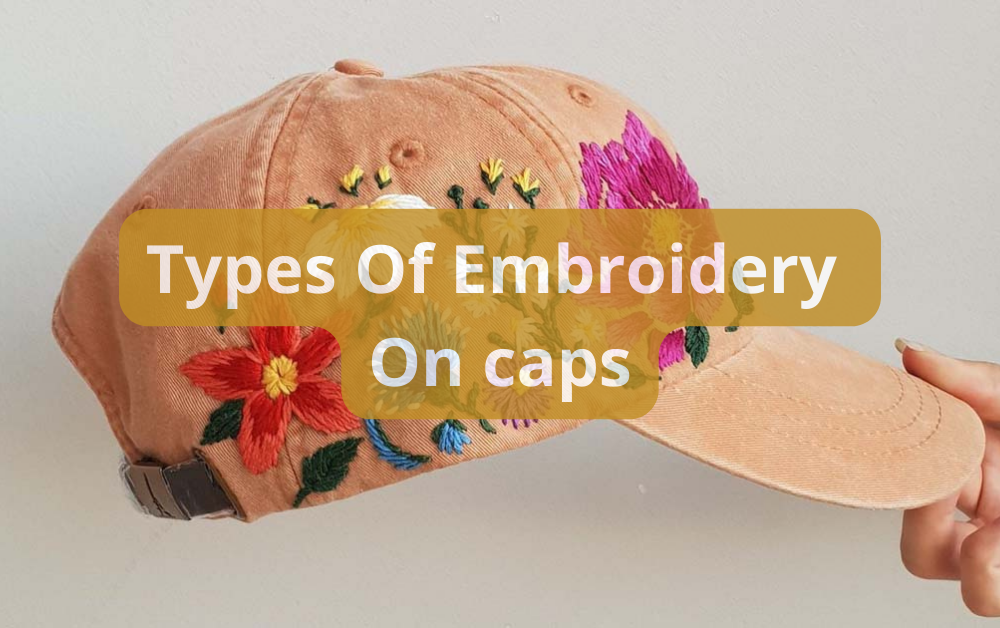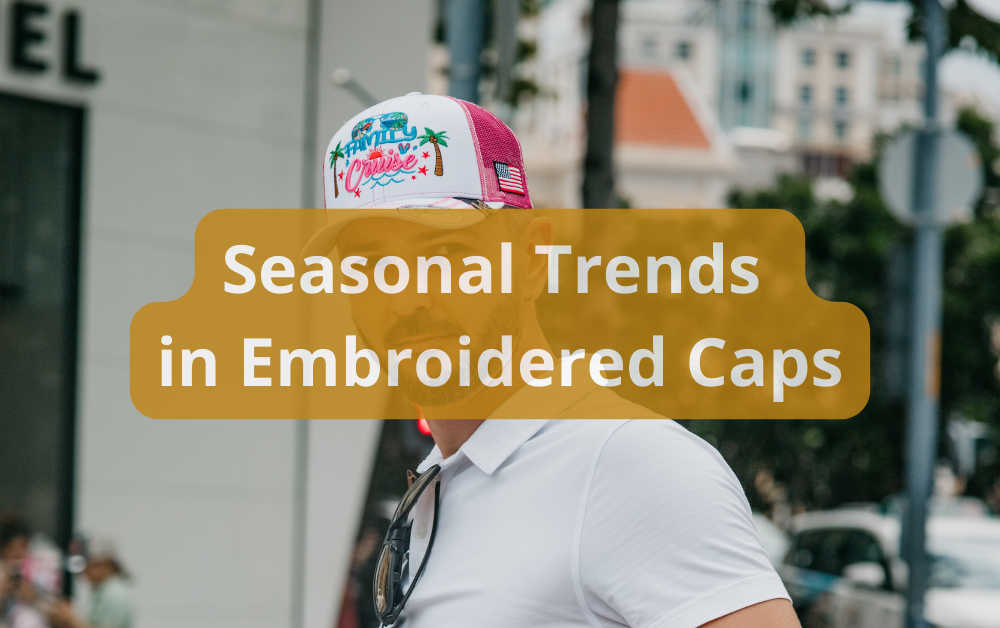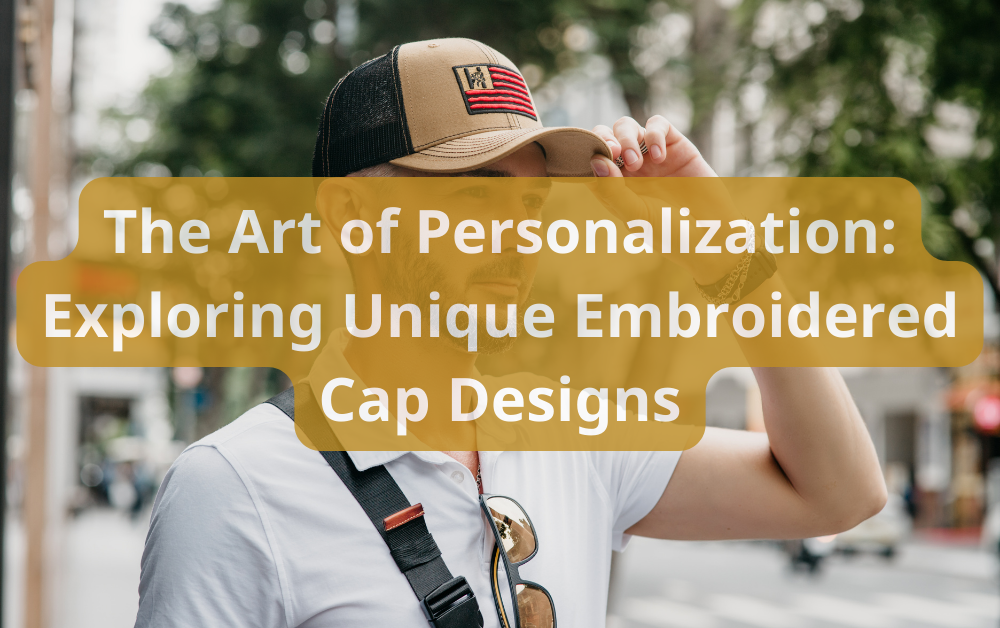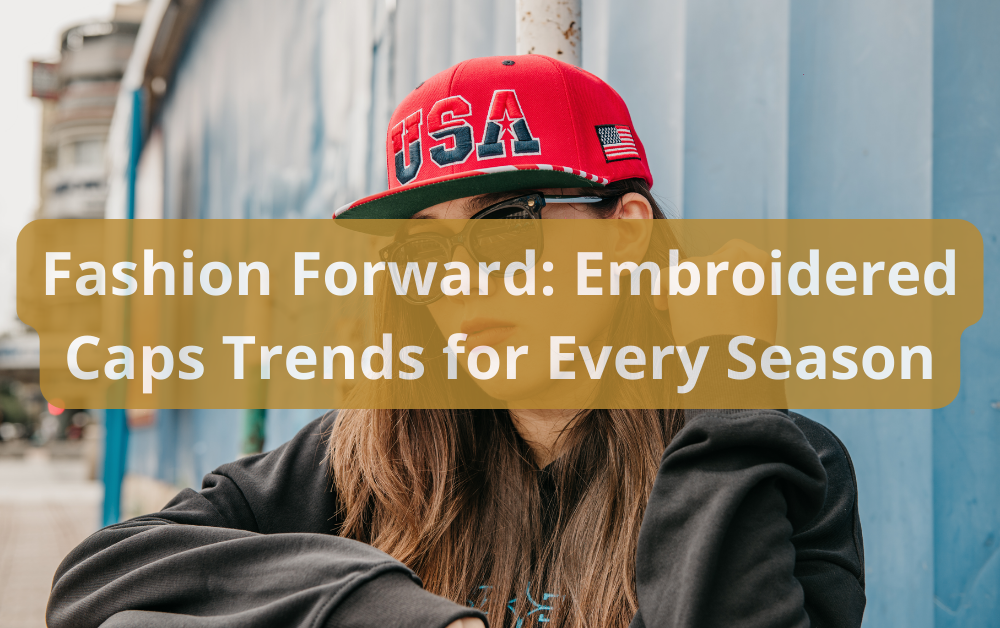Types Of Embroidery On Caps
Explore the diverse world of cap embroidery as we unravel the artistry behind various stitching techniques. From classic to contemporary, discover the distinct types of embroidery that adorn caps, adding a unique touch to each design. Dive into this guide to understand the intricate craftsmanship that transforms a simple cap into a personalized fashion statement.
What is Flat Embroidery?

Flat embroidery is a popular technique used to embellish fabrics, including caps, with decorative designs using threads.
This method involves stitching the design directly onto the surface of the material, creating a flat and smooth finish. Here's an explanation of flat embroidery, including its traditional method and the 2D appearance it achieves:
Traditional Method
Design Creation: A digital or physical design is created before starting the embroidery process. This design serves as a blueprint for the embroidery machine to follow.
Hooping: The fabric, in this case, a cap, is hooped onto the embroidery machine. Hooping involves stretching the fabric tightly over a frame or hoop to keep it in place during stitching.
Digitization: The design is then digitized, which involves converting the artwork into a format the embroidery machine can understand. Each element of the invention is translated into specific stitches and color codes.
Thread Selection: Threads in various colors are chosen to match the design. The thread's type and thickness can influence the embroidery's final appearance and texture.
Machine Setup: The embroidery machine is set up with the hooped fabric, and the digitized design is loaded into the computer.
Stitching: The machine follows the digitized design, stitching the pattern onto the fabric. The stitches are made using different techniques, such as satin stitches, running stitches, or fill stitches, depending on the design requirements.
Trimming and Finishing: Once the design is complete, any excess thread is trimmed, and the finished product is inspected for quality. Additional steps may be taken to secure the stitches and ensure durability.
2D Appearance
Flat embroidery creates a two-dimensional (2D) appearance on the surface of the material. Flat embroidery lies flush with the fabric unlike three-dimensional techniques involving raised or textured elements. The stitches are evenly distributed, resulting in a smooth and flat surface.
This technique is well-suited for designs that don't require a textured or layered effect, making it a popular choice for logos, text, or simple graphics on caps and other garments.
The 2D appearance of flat embroidery provides a clean and professional look, making it a versatile option for a wide range of applications, from corporate branding on uniforms to stylish embellishments on casual wear. The simplicity and clarity of flat embroidery make it a timeless choice for creating visually appealing designs on caps and other accessories.
Popular designs and patterns
Logos

Logos are iconic symbols or visual representations that embody the identity of a brand, organization, or team. When embroidered on caps, logos are a powerful means of branding and recognition. Logos can range from simple and minimalist designs to more intricate and detailed representations, depending on the entity they represent.
Logos on caps are widely used in various contexts, including corporate merchandise, sports team apparel, and promotional events. The embroidered logo on a cap is a visual signature, creating a lasting impression on the audience.
Lettering
Lettering involves the embroidery of text, such as brand names, slogans, team names, or individual initials, onto the surface of a cap. The choice of font, style, and size can greatly influence the overall aesthetic of the cap.
Lettering is versatile and allows for a wide range of customization, making it a popular choice for creating personalized and unique caps.
Lettering is commonly used on caps for personalization, team merchandise, and promotional purposes. It is an effective way to convey a message or communicate a brand identity.
Whether it's a bold and dynamic font for a sports team or an elegant script for a fashion brand, lettering adds a distinctive touch to caps.
Advantages and Considerations of Flat Embroidery on Caps
Smooth Finish
Advantage: One of the primary advantages of flat embroidery on caps is its smooth finish. The stitches lie flat against the fabric, creating a sleek and polished appearance. This smooth finish enhances the overall look of the cap, making it suitable for various styles, from casual to corporate.
Consideration: While a smooth finish is generally desirable, there may be better choices for designs that require a textured or raised effect. Other embroidery techniques, such as 3D puff embroidery, may be more appropriate if a three-dimensional appearance is desired.
Ideal for Intricate Details
Advantage: Flat embroidery excels at capturing intricate details in designs. This technique allows for precise and detailed stitching, fine lines, small text, or complex patterns. This makes it an ideal choice for logos or designs requiring high clarity and precision.
Consideration: While flat embroidery is suitable for intricate details, extremely small or complex designs may pose challenges in visibility and the ability of the embroidery machine to reproduce every detail accurately. It's essential to consider the scale and complexity of the design when opting for flat embroidery.
Versatility in Design
Advantage: Flat embroidery is versatile and can be used for a wide range of design styles, including logos, lettering, and various patterns. This adaptability makes it a go-to choice for different industries and purposes, from corporate branding to fashion and personalization.
Consideration: Design versatility is a strength, but it's essential to select the right embroidery technique based on the specific design requirements. For designs that benefit from a raised or textured effect, exploring other embroidery methods may be necessary.
Professional and Clean Appearance
Advantage: The 2D appearance of flat embroidery lends a professional and clean look to caps. It is well-suited for applications where a neat and polished presentation is desired, such as corporate uniforms, promotional merchandise, and branded apparel.
Consideration: The clean appearance of flat embroidery makes it a timeless choice, but it may not be the best fit for every design aesthetic. Consider the overall style and purpose of the cap to ensure that flat embroidery aligns with the desired visual impact.
In summary, flat embroidery on caps offers a smooth finish and is particularly effective for designs with intricate details. While it provides a clean and professional appearance, it's important to consider the specific design requirements and desired visual effects when choosing an embroidery technique.
3-Dimensional (3D) Embroidery on Caps

Definition and Characteristics of 3D Embroidery
Raised and Textured Appearance
Definition: 3D embroidery is a technique that involves adding a three-dimensional, raised effect to embroidered designs on caps. This is achieved by using a foam underlay beneath the stitches, creating a lifted or padded appearance on the surface of the material.
Characteristics:
The foam underlay raises the embroidered area above the base fabric, giving it a distinct texture.
Stitches are applied over the foam, allowing them to stand out and create a raised effect.
The raised elements provide a tactile and visual dimension to the design, making it more prominent and eye-catching.
Adds Depth and Dimension
Definition: 3D embroidery adds depth and dimension to cap designs by creating a multi-layered effect. This technique goes beyond the flat surface of the fabric, making the embroidered elements stand out in relief.
Characteristics:
The raised stitches create shadows and highlights, enhancing the overall visual impact of the design.
The added dimensionality makes the embroidered elements appear more substantial and pronounced.
3D embroidery allows for a bolder and more tactile representation of logos, text, or other design elements on caps.
Suitable Designs for 3D Embroidery
Bold Logos
Description: 3D embroidery is particularly well-suited for bold and impactful logos. Logos with strong, distinct shapes and elements can benefit from the raised and textured appearance provided by 3D embroidery. The technique enhances the logo's visibility and gives it a dynamic presence on caps.
Characteristics:
- Bold logos with clear outlines and defined shapes work effectively with 3D embroidery.
- The raised elements add a tactile quality to the logo, making it stand out prominently.
- Brands seeking a visually striking and memorable representation often opt for 3D embroidery for their logos on caps.
Sports Emblems
Description: Sports emblems, team logos, and mascots are excellent candidates for 3D embroidery on caps. The technique adds a sense of dimensionality to the emblem, making it more visually compelling. This is particularly popular in sports apparel, where logos play a significant role in team identity.
Characteristics:
- Team logos and emblems can be enhanced with the raised and textured appearance of 3D embroidery.
- The added depth makes sports-related designs more dynamic and engaging.
- 3D embroidery is commonly used on caps worn by athletes, fans, and supporters, contributing to a sense of team pride.
Practical Considerations for 3D Embroidery on Caps
Thickness of Materials
Consideration: The thickness of materials, including both the cap itself and the foam underlay used for 3D embroidery, is a crucial practical consideration.
Impact on 3D Effect: The thickness of the cap material influences how prominently the 3D effect will be visible. Thicker caps can accommodate a more substantial foam layer, leading to a more pronounced raised effect. However, excessively thick materials may pose challenges during the embroidery process.
Cap Comfort: The added thickness from 3D embroidery should be considered in terms of wearer comfort. Excessive bulkiness may affect how comfortably the cap fits on the head.
Impact on Overall Design Aesthetics
Consideration: The decision to use 3D embroidery should align with the overall design aesthetics and goals for the cap.
Visual Impact: While 3D embroidery adds a dynamic and tactile quality, it can also significantly alter the visual appearance of the cap. Consider how the raised elements will interact with other design elements and whether they enhance or distract from the overall aesthetic.
Brand Image: For branded caps, the 3D effect should complement the brand image and message. Some brands may prefer a sleek and minimalist look, while others may benefit from the boldness and visibility offered by 3D embroidery.
Choosing the Right Type of Embroidery for Your Caps

Purpose of the Cap
Consideration: The intended purpose of the cap plays a significant role in selecting the appropriate embroidery type.
Examples:
- Promotional Caps: For promotional caps that aim for widespread visibility, cost-effective and versatile options like flat embroidery may be suitable.
- Sports Team Caps: Caps representing sports teams or events may benefit from bold and dimensional 3D embroidery to enhance team branding.
- Corporate Uniform Caps: Caps used as part of corporate uniforms may favor a clean and professional look achieved through flat embroidery.
Design Preferences
Consideration: Individual design preferences, style, and the complexity of the desired design influence the choice of embroidery technique.
Examples:
- Sleek and Modern: Those preferring a sleek and modern aesthetic may opt for flat embroidery, especially for logos, lettering, or minimalist designs.
- Bold and Dynamic: If a design calls for a bold and dynamic appearance, 3D embroidery can add texture and dimension, making it a suitable choice for impactful logos or emblems.
- Artistic and Intricate: Those looking for intricate detailing may prefer flat embroidery, which allows for precise rendering of fine lines and details.
Material and Construction of the Cap
Consideration: The type of material and construction of the cap impact the feasibility of certain embroidery techniques.
Examples:
- Structured Caps: Caps with a structured and rigid construction, such as those with a stiff front panel, may be more conducive to 3D embroidery, as the structure provides support for raised elements.
- Soft and Lightweight Caps: Soft and lightweight caps may be better suited for flat embroidery, ensuring a smooth finish without compromising the cap's structure.
- Mesh Caps: Caps with mesh panels or unconventional materials may require careful consideration, as some embroidery techniques may be more challenging to execute on these surfaces.
In conclusion
The diverse world of cap embroidery offers a rich tapestry of possibilities, from the classic refinement of flat embroidery to the dimensional allure of 3D techniques. Each stitching method contributes a unique charm, allowing caps to transcend mere headwear and become personalized statements.
Whether embracing the clean professionalism of flat embroidery or opting for the bold impact of 3D designs, the artistry involved in cap embellishment persists as a timeless form of self-expression. As caps adorned with intricate stitches continue to grace runways, sports arenas, and everyday streetwear, their enduring appeal underscores the undeniable significance of embroidered caps in the realm of fashion and personal style.
